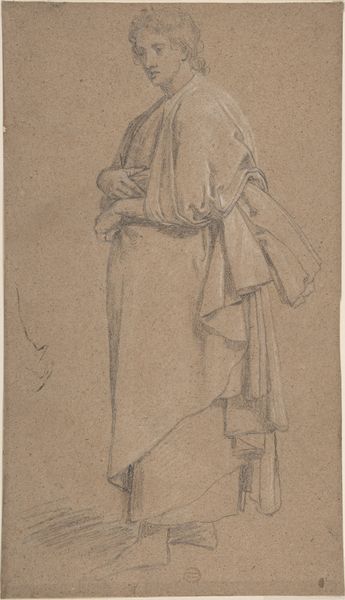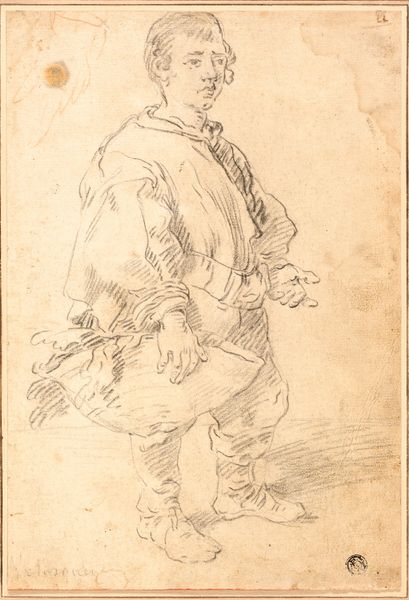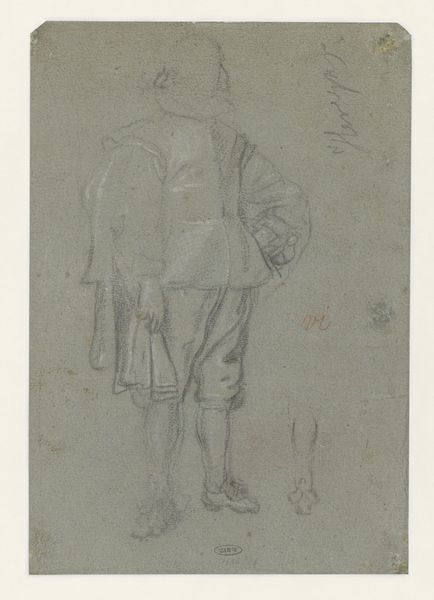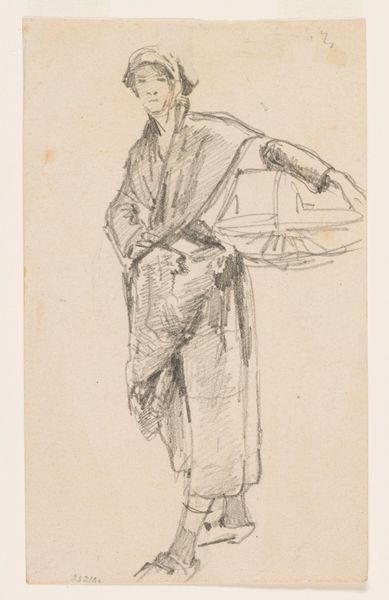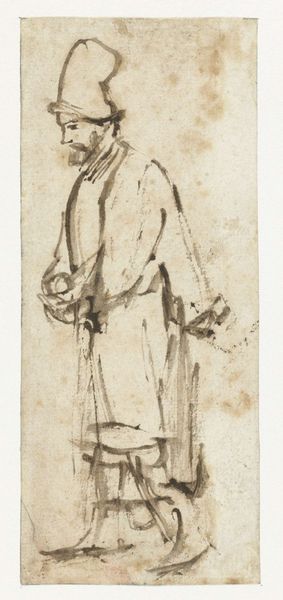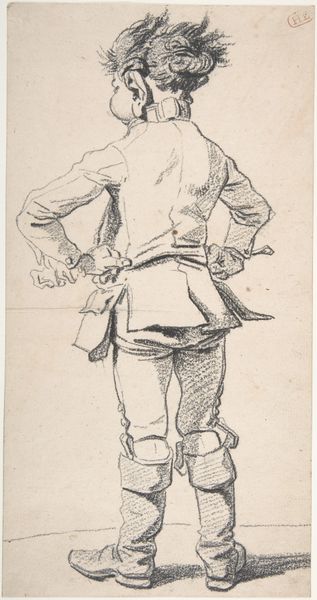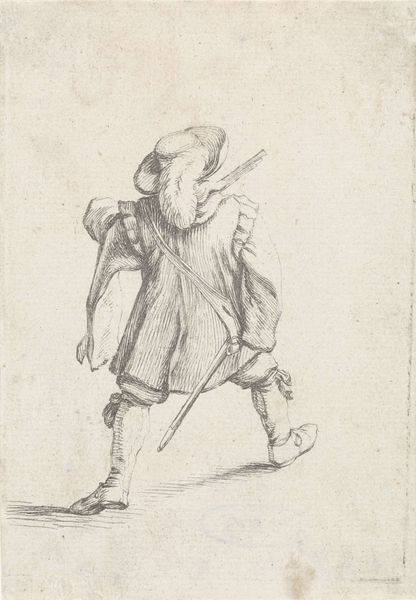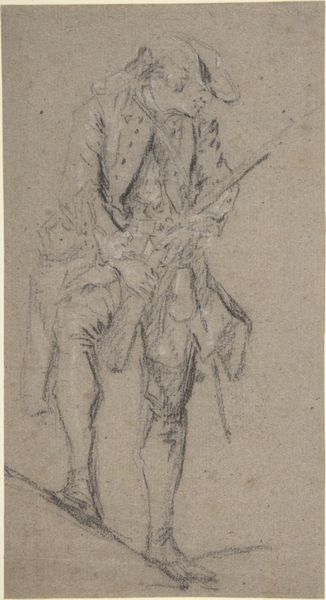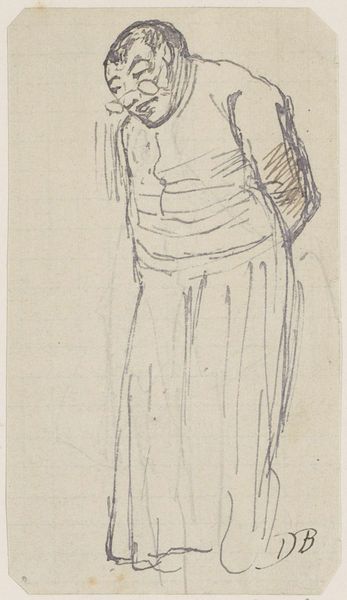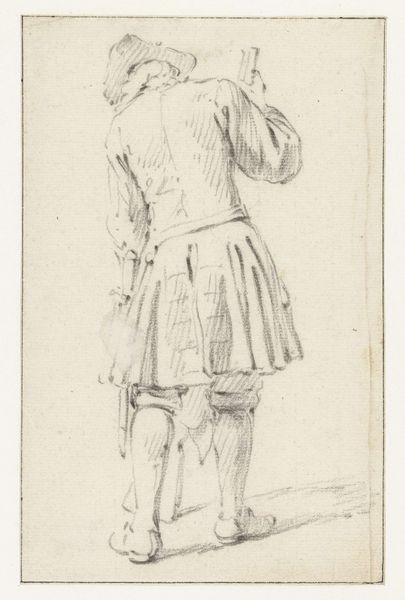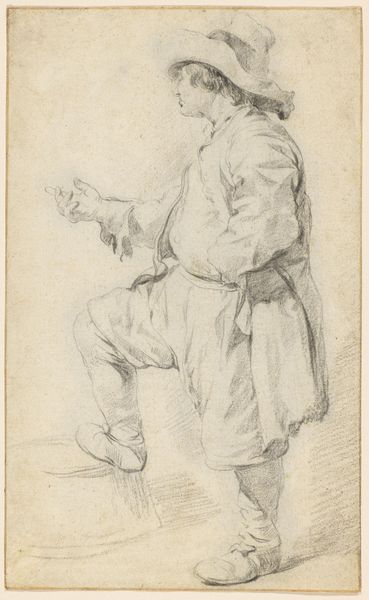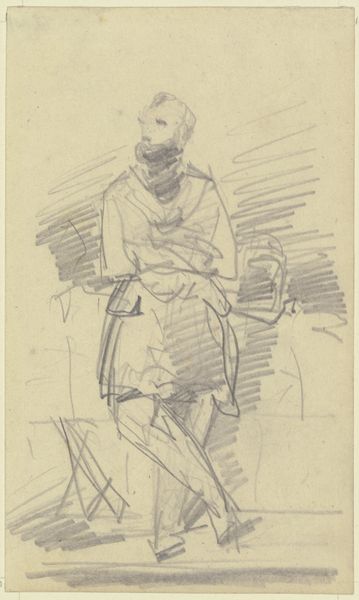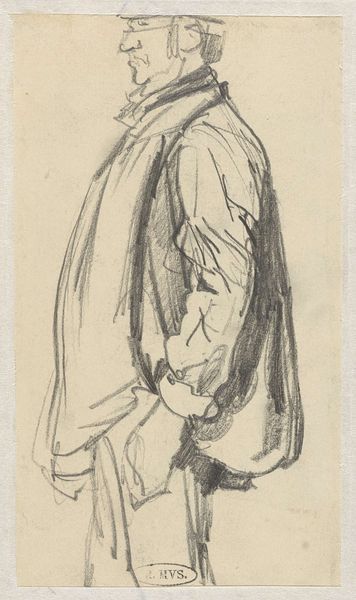
drawing, pencil
portrait
drawing
baroque
pencil sketch
figuration
pencil
realism
Dimensions: height 292 mm, width 170 mm
Copyright: Rijks Museum: Open Domain
Editor: Here we have "Standing Man with a Pouch," a pencil drawing by Rembrandt van Rijn, created around 1629 or 1630. It's at the Rijksmuseum. There’s a captivating vulnerability in this quick sketch, but something about his stance seems almost defiant. How do you interpret this work? Curator: That "pouch," consider it—what does it contain? Possessions? Secrets? Memories? Think of this figure as an archetype, a wanderer perhaps. The drawing isn’t merely a portrait, but a coded story. The heavy shading hints at burdens, both literal and symbolic, he carries, don’t you think? How might this image speak to enduring ideas about journey, resilience, and the weight of the past? Editor: I see that now! I was so focused on the visual aspect, I hadn’t considered the deeper symbolic weight of something as simple as a pouch. Is that a typical feature in Rembrandt’s drawings from this period? Curator: In Rembrandt's world, the everyday *is* the symbolic. Consider costume itself. Note his disheveled clothing. Garments visually signified a character's trade, status, or disposition in art, as clothing does in the real world, doesn't it? By obscuring the specific details of his dress, he suggests a figure that transcends any single identity or social role. This reinforces the idea that this "standing man" is an embodiment of universal human experiences. Editor: That's fascinating – so, he's inviting us to look beyond the surface and consider the universal human condition reflected in this single figure. Curator: Exactly! Think about what details Rembrandt chose to include, and how even quick sketches can embed complex meaning. It helps us question what "Rembrandt" signifies in our collective imagination, from individual brilliance to broader ideas of visual language. Editor: It’s amazing to think how much a simple sketch can convey when you start unpacking the symbols and the history. Curator: Indeed, seeing isn't just perceiving; it’s about deciphering the visual codes woven into art and how they resonate across time.
Comments
Already early on in his career, Rembrandt enjoyed observing attentively and drawing the characters he happened upon in the street. Moreover, he was exceedingly skilful in the use of black chalk. He captured the pose and frame of mind of these three down-at-the-heels men with deft lines. He corrected the contours in areas with the sharpest point of his chalk.
Join the conversation
Join millions of artists and users on Artera today and experience the ultimate creative platform.
